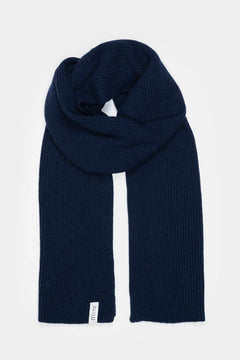Have you ever thought about how many things you bought in your life? And how many actually lasted a long time?
Ok, try to go back 100/150 years ago. Think about how many items your grandparents or great-grandparents bought in their life and how long they lasted. Maybe you still have some of those things today.

Did you feel a little dizziness? Yes, we understand you... We really need to start owning (not consuming) less and more durable things.
For this reason the impact that an object has on the environment becomes increasingly important for a sustainable strategy.
Designing in order to reduce this impact is what we call eco-design.
What does eco-design mean?
Apparently ecodesign stands for the design of sustainable things at large, often made with recycling waste materials. What it actually means is a little different. It is about products designed thinking about their future life, a life cycle indeed.

The designer, but also the producer, take responsibility for the object created. A responsibility that involves not only the production phases, but also how that product will be marketed, shipped, how long and how it will be used and, very importantly, disposed of. Each of these phases must be designed to minimize the impact on the planet.
Let's see them.
The production impact
The production of an object brings many processes that affect the environment.
Let's remain in the clothing field, the one we know better. For example the production of a garment involves the consumption of a lot of water, dyes and chemicals for the coloring. To these we must add the CO2 consumed for transport at all stages of production. Something that increase exponentially when these processes take place in very distant places.
When controlling all stages of production is not possible, LCA ( Life Cycle Assessment ) become very useful to eco-design. These certifications explain what impact had a particular material, and how much it saves compared to more traditional and unsustainable ones.
This, for example, is the LCA of the recycled cashmere yarn we use for our winter sweaters:

The sale impact
Even the marketing of a product has an impact that can be reduced.
Let's think of packaging. To be consistent with eco-design it should:
- be minimized
- be made of a single material and therefore recyclable
- possibly it should be made from waste or recycled material, so that even its production impact is limited (yes, packaging is a product too)
The most eco-design packaging is the reusable one. Both in daily life, and to become a new packaging, for example Repack reusable packaging for e-commerce.
In the sale phase there can also be many other impacts on the footprint that an object leaves on the earth.

The B2B, the e-commerce shipment transport... All these things are often essential, but can be optimized when you want to create an eco-design product.
Of course selling only locally a few km from the production is the only choice that can guarantee the lowest CO2 impact.
The use impact
Once an object has been purchase we must ask ourself: how long will it last ?
Of course, quality has something to do with it. A tested quality, designed on the basis of what the use and maintenance of the product will be.
Returning to the clothing field, designing an eco-design garment means, for example, is thinking about what will happen whith the washing? Will these processes affect its quality and allow it to last a long time? Will they pollute leasing harmful substances such as microplastics?

The disposal impact
Let's close the circle.
An eco-design object must of course be recyclable and respect the principles of circular-economy. Its life cannot end in a landfill with general waste.

This depends a lot on the material this object was made.
As with packaging, it is important that an eco-design product is composed of the fewest possible materials, preferably only one.
The same goes for clothing, the less fibers in the composition, the better. Especially if synthetic.
Polyester, acrylics, and petroleum-derived fibers make it more difficult to recycle a product. And in any case it reduce its starting quality.
Eco-design and fashion: how to create a sustainable garment
There is an aspect that we have not talked about, beside all the attention related to materials: natural, recyclable and often recycled, made with low environmental impact processes. How is an eco-design garment conceived ? How do the creative process is affected?
Well, it's simple, an eco-design dress must be designed to last. This means that the designer has to think about people, what they need and what could represent an investment for them over time.
A garment that is too "fashion", that follows the season trends, can hardly be eco-design. Because it is created to last a few months.
As always, the question, not only as consumers, but also as creators is: will people want to wear this garment over the years ?
Can eco-design be a limit?
Eco-design is a challenge.
But limits boost creativity: we at Rifò believe this.
At the same time as a sustainable clothing brand we must admit that in some case it is necessary to sacrifice some principles, perhaps to support other ones.
Let's make an exampe. Our jeans sweater had a 95% cotton composition, therefore perfectly recyclable.

Despite this, the sleeves and cuffs often suffered flaring. So we found ourselves at a crossroads: a garment with a better composition or a more durable garment?
We have therefore decided to insert a minimum percentage of lycra, a synthetic fiber, to increase the quality and above all the durability of our denim sweaters in people's closets.
Anyway we didn't penalised the possibility to recycle the Rifò denim sweater. In fact the quantity of synthetic fiber is very low, around the 5%: mission complete!










Kommentar hinterlassen